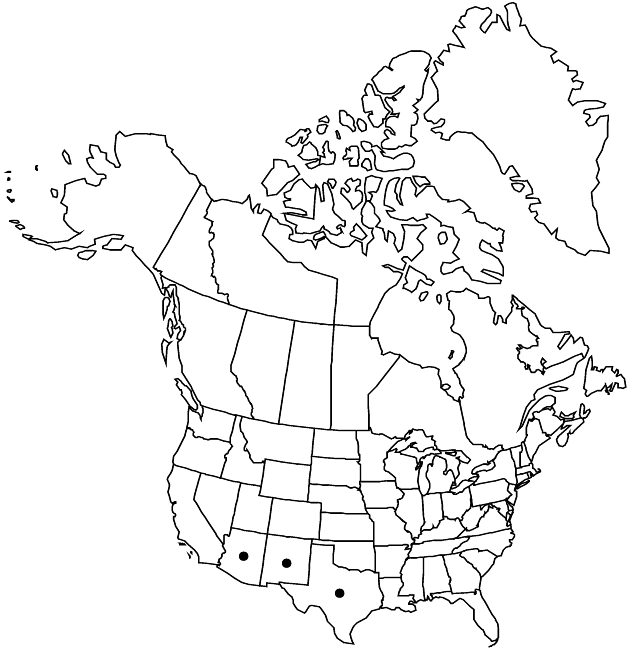Pectis cylindrica
in N. L. Britton et al., N. Amer. Fl. 34: 198. 1916.
Annuals, 1–20 cm (across or high); herbage not scented. Stems prostrate to ascending (often mat-forming, densely leafy distally), puberulent (in decurrent lines or throughout) or glabrate. Leaves (bluish green) linear to linear-oblanceolate or narrowly oblong, 10–30 × 1.5–4 mm, margins with 2–5 pairs of setae 1–2 mm, faces glabrous (abaxial densely dotted with scattered, circular oil-glands 0.05–0.2 mm). Heads borne singly or in congested, (leafy) cymiform arrays. Peduncles 1–5 mm. Involucres cylindric. Phyllaries coherent (falling together), oblong to oblong-obovate, 6–10 × 2–3 mm (dotted with scattered, elliptic oil-glands 0.05–0.15 mm). Ray-florets 3 (–4); corollas 3–4 mm (scarcely surpassing phyllaries). Disc-florets (3–) 7–14; corollas 2.2–2.6 mm (2-lipped). Cypselae 4–5.5 mm, puberulent (distally glandular-puberulent); pappi of 2 (ray) and 5 (disc) lanceolate scales 1.5–3.5 mm. 2n = 48.
Phenology: Flowering Jul–Nov.
Habitat: Deserts, oak-juniper woodlands, grasslands, wash channels, mud flats, lawns, roadsides
Elevation: 700–1500 m
Distribution

Ariz., N.Mex., Tex., Mexico (Baja California Sur), Mexico (Chihuahua), Mexico (Coahuila), Mexico (Durango), Mexico (Nuevo León), Mexico (Sinaloa), Mexico (Sonora)
Discussion
Pectis cylindrica (2n = 48) is similar to P. prostrata (2n = 24); the two occasionally grow together (D. J. Keil 1975b). Some herbaria contain mixed collections of the two. No evidence is available of hybrids between the two.
Selected References
None.